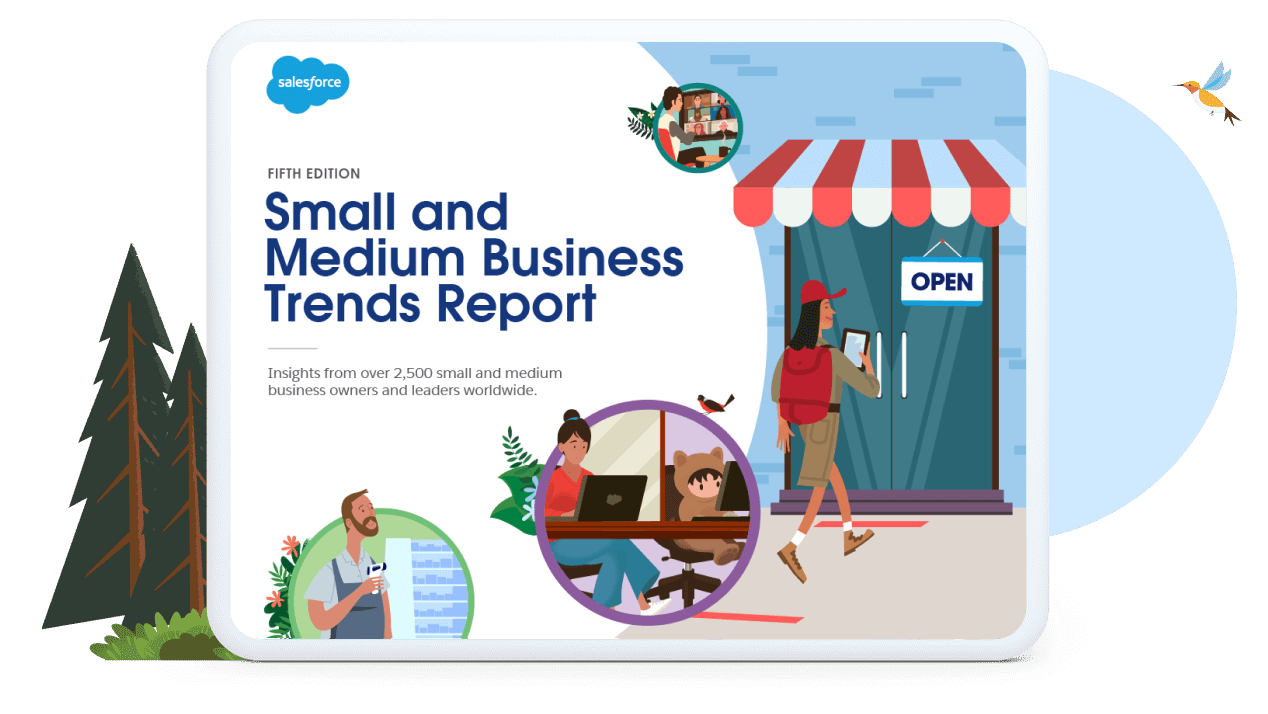Small business cyber security is a crucial concern for many of today’s enterprises, as collecting and leveraging data is more important than ever. But at a time when ransomware and phishing scams are proliferating – and internal threats can also present significant challenges – how can small businesses make sure that their data is secure?
Let’s take a look at why small business cyber security is a concern, and then talk about how to create a better blueprint for small business cyber security.
The SMB Trends Report 5th Edition
Discover what’s driving today’s small businesses – and see where they might be headed next.

Why small business cyber security is so important
If you think it’s only big businesses that have to worry about cyber threats, you might be surprised to know how prolific cyber-attacks against small businesses are. In fact, an FSB report shows that there are nearly 10,000 cyber-attacks against small businesses every day.
This has resulted in more than 530,000 small firms being subjected to phishing scams over the past two years, with the annual cost of cyber-attacks against small businesses estimated to be north of £4.5 billion.
These attacks don’t just inflict financial damage on UK institutions; they can destroy a business’s reputation as well. Some of the negative effects of cyber-attacks include:
- Financial losses due to business disruption.
- Loss of customer trust and damage to industry reputation.
- The costs of customer compensation.
- Compromised data that could fall into the hands of competitors.
In a time when creating trust is paramount, it’s easy to see why so many small businesses are creating a cyber security strategy to protect themselves from multiple new threats.
What are the top cyber security threats facing small businesses?
Digital threats are emerging regularly, and any cyber security strategy should be frequently revisited. Hackers and malicious actors are growing more sophisticated in their attacks, using readily available sources such as social media pages to gather private information and personalise phishing scams. Keystroke loggers can be deployed to reveal passwords and sensitive data, and entire websites can be held hostage until a ransom is paid into an untraceable account.
But despite these advances in cyber-crime techniques and technologies, the most common small business cyber security threat is still the most basic: human error.
Here are 5 small business cyber security threats to look out for:
- Human error.
- Weak passwords or re-using passwords across multiple accounts.
- Phishing scams.
- Malware/ransomware.
- Inside threats.
6 tips for creating a small business cyber security strategy
If the bad news is that cybercriminals are becoming savvier, the good news is that there are plenty of ways to improve your cyber security strategy and stay a step ahead.
Here are 6 tips for creating a cyber security strategy that safeguards your data, protects your customers and keeps your workforce plugged in.
- Train the workforce. Human error accounts for a huge percentage of cyber-security issues, so it’s imperative that the workforce has been trained to ensure security protocols are met. You can use on-demand training platforms to create custom learning journeys based on your business’s unique security needs or put together a cyber-security handbook that covers all the basics.
- Limit third-party apps and the use of personal devices. Otherwise known as
Shadow IT, the use of unsanctioned apps and personal devices in the office, has risen in the age of remote and hybrid work. While shadow IT can offer benefits in terms of boosting productivity, it also presents a security concern, as any vulnerabilities and violations will be beyond the purview of the IT department.
- Beware of big phish: Phishing attacks can be especially damaging cyber-crimes, and it’s been estimated that the average worker receives 14 phishing emails each year, and half will respond to a phishing attempt that includes a Voice element. Ensure that the workforce operates on a ‘zero trust’ policy when receiving calls and emails.
- Update software or utilise cloud computing platforms with automatic updates. It’s important to always update your software in order to patch any security vulnerabilities, but if you use a cloud-computing solution this will be handled for you. On top of that, cloud computing solutions often offer customisable security options, so you can choose the level of security that matches your business goals.
- Use two-factor authentication. One of the easiest and most cost-effective ways to improve small business cyber security is to use two-factor authentication. With TFA, users need more than a password to access data, they also need to confirm via their mobile or with a fingerprint. This produces a line of defence against hackers and brute-force cyber-attacks.
- Use VPNs. VPNs can encrypt confidential and corporate data through a secure connection so that it’s protected from prying eyes. Devices that are connected to the VPN will use security keys to decode the data, while any attackers would only see the meaningless encrypted data. When using a VPN, it’s paramount that all devices and accounts are kept secure, as one compromised account will give an attacker the ‘key’ to access everything connected to the VPN.
Small business cyber security isn’t a one-off concern – it’s an ongoing issue
There’s a fine line between keeping your data safe and making it inaccessible. In order to compete in the current climate, organisations need to be data-driven and customer-centric. They not only need to be able to access and leverage their data whenever and wherever they need it; they need to make sure that their data complies with protocols and regulations.
Locking down data is not the answer. Instead, look to democratise your data and eliminate rogue elements. Make sure the workforce is trained to be on the lookout for phishing and ransomware attacks. Limit the use of outside devices by making sanctioned processes and platforms easy, efficient and employee-friendly. And most importantly, stay up to date on emerging threats. After all, it’s a continual race between the white hats and the black hats on the new data frontier, and new technology trends can create a Pandora’s box as well as a goldmine.
To see more about how small businesses are addressing the concerns of the digital age, check out our SME Trends Report. And to see how connecting business processes can help your organisation unlock game-changing benefits, get a free copy of the Connected Small Business eBook.
The Small Business Growth Kit is now live
View the latest guide for tips on connecting with the customer, mastering your sales pitch, and navigating the twists and turns of the road to business growth.

























